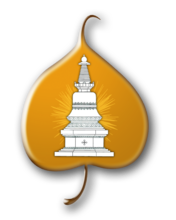Basic Program
Kadampa Center is now offering FPMT's Basic Program, taught primarily by our resident teacher, Geshe Gelek, and facilitated by Shankha Mitra. This five-year program was designed by Lama Zopa Rinpoche for students who have completed basic levels of study and have a regular Buddhist practice to gain a profound knowledge of the key aspects of the entire Buddhist path.
Pre-requisites and Pre-registration
Information about the pre-requisites and the form to register are available on the Basic Program page. Students who are starting the course with this module need to register by Sunday, Sept. 14th. The class will be recorded but not streamed since students need to attend in person to fully participate.
Mind and Cognition: part 1, Mind and Mental Factors
An introduction to Buddhist psychology, Mind and Mental Factors describes the various positive and negative emotions, as well as the cognitive states relevant to practice of a liberative path are identified and defined. Understanding the 51 mental factors gives us insight how to develop our positive qualities and apply atidotes to the negative ones.
Geshe Gelek said strongly that a basis of lam-rim is usually taught first and is an important part of our practice, so this class should not take the place of or distract from Wednesday night's lam-rim course.
Guest FPMT Registered teacher, Venerable George Churinoff, will be teaching this module in Geshe-la's absence. A physics graduate from MIT, Venerable George earned a Masters degree in Buddhist studies from Delhi University, India. He took ordination in 1975 and studied the Geshe Studies Program at Manjushri Institute, England, where he also served as Spiritual Program Coordinator. Venerable George was instrumental in founding the Masters Program at Istituto Lama Tzong Khapa in Italy, where he also served as Program Coordinator. After studying and teaching there for eight years he spent several years at Tushita Centre in Delhil, followed by three years as Lama Osel Rinpoche's English curriculum tutor at Sera Je Monastery in South India. Venerable George has done many retreats in the sutra and tantra traditions and taught extensively in FPMT centers all over the world. He taught the Basic Program as resident teacher at Dorje Chang Institute, New Zealand, and at Land of Medicine Buddha, USA. Venerable George now resides near Asheville, NC.
Materials
The text for this class, Kachen Yeshe Gyaltsen's Clear Exposition of the Modes of Minds and Mental Factors: a Necklace for those of Clear Mind, homework assignments, a service sign-up sheet, supplemental materials, and recordings are available for download on a private webpage for registered students in the Members section of the website. If you are not a member yet, please contact membership@kadampa-center.org. The link will be sent to students when registration closes. There is also an email list for discussion and announcements.

